What Does the Equal Sign Mean?
In mathematics, we tend to equate two items or expressions when we show the equality between the two expressions. The equal sign in math is a sign that shows the equality between two expressions.
In simple words, the meaning of equal sign is that there is an equality between the values, or expressions written on both the sides. The symbol that represents the equal sign is given by two small parallel horizontal lines.

The symbol “$=$” represents that the expression that is on the left side of the sign is exactly the same amount or value of the expression that is on the right side of the sign.
We place an equal sign between two things that are the same or equal.
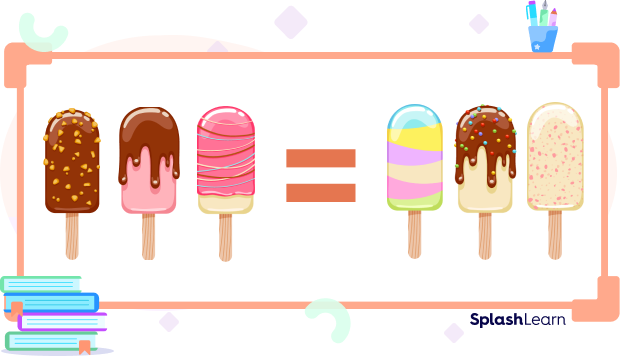
For example:
- If it is written $2 + 2 = 4$, it means that $2 + 2$ is equal to $4$.
- $\$1 = 10$ dimes, which means that 1 dollar is equivalent to 10 dimes.
Recommended Games
The History of the Equal Sign
Robert Recorde, a Welsh physician and mathematician, invented the equal sign (=) and also introduced the pre-existing plus sign (+) to English speakers in 1557.
Recommended Worksheets
Using “Equal To” in an Equation
An equation is a statement of equality between two mathematical expressions that contains variables and constants. In every equation, the expression given on the left-hand side (LHS) is equal to the expression given on the right-hand side (RHS).
For example: $5 + 3 = 8$
This means that the LHS is $5 + 3$ and it is equal to the RHS, which is 8.
If we have an equation $2x + 3 = 7$. It means that $2x + 3$, i.e., the expression given on LHS is equal to 8, i.e., the expression given on RHS.
Then we can deduce that $x=2$.
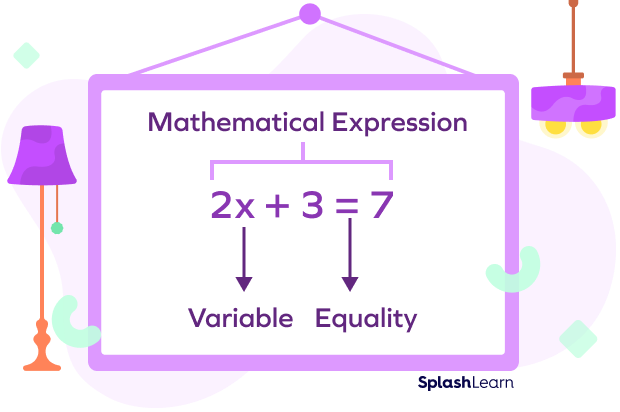
Using the “Equal To” Sign in Measurement
The amount or quantity or length of any object is shown by measurement.
For example, Oliver is given the task of measuring the length of a spoon. He uses a centimeter scale to measure its length.
He finds out the distance between the start and the endpoint of the spoon.
The length of the spoon $= 16$ cm. It means that the length of the spoon “is equal” to 16 cm.
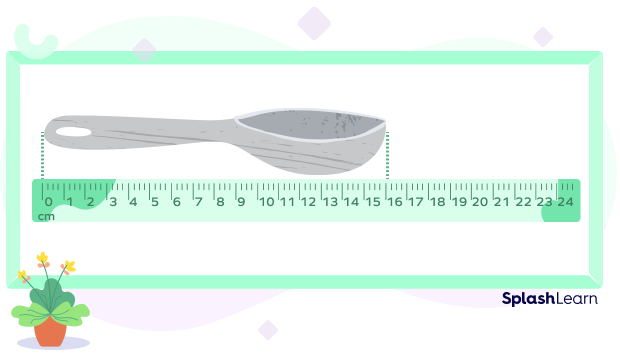
Using Equal Sign in Fractions
Fractions tell us about the part of a whole. In fractions, the equal sign between two fractions represent that they are equivalent fractions or the fractions cover equal parts of a whole.
For example: $\frac{1}{5}=\frac{2}{10}$ means that $\frac{1}{5}$ is equivalent to $\frac{2}{10}$.
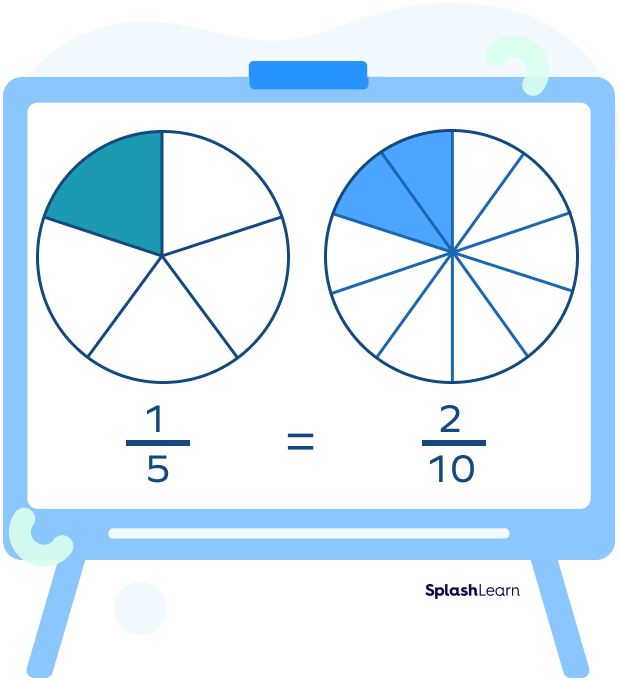
Difference between the Equal Sign and the Equal Sign with Three Lines
The equal sign with two lines means two expressions are equal. For example: $a = 4, b = 12$.
On the other hand, the equal sign given with the three lines means two things are identical. It is similar to but not necessarily the same as an equal sign.
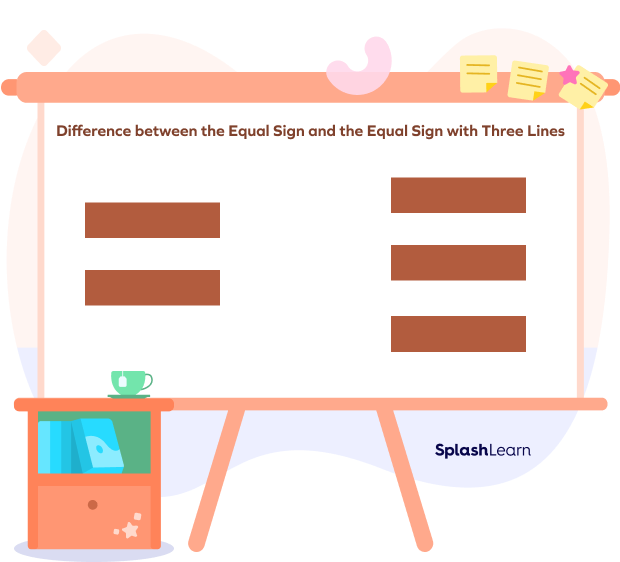
Equal Sign with Slash
The equal sign with slash means that it is the unequal sign, i.e.,$\neq$ . It is used when two expressions are not equal.
For example: $5 \neq 8$ means that 5 is not equal to 8.
Solved Examples
1. The product of two numbers a and b is exactly 12. How can you represent it mathematically?
Solution: The given statement is “The product of two numbers a and b is exactly 12.” It can be represented mathematically using the equal sign. Therefore, ab $= 12$ is the required equation.
2. What is the value of y if $3y+7=28$?
Solution: $3y+7=28$
$3y=28\;-\;7$
$3y=21$
$y=7$
3. How would you write that $xy-3=10$ in words?Solution: The difference of the product of x and y and 3 is equal to 10.
Practice Problems
Equal Sign - Definition with Examples
Jack and Jill are twin brothers. Which of the following is true for them?
Since Jack and Jill are twins so their ages will be equal.
Which of the following are equal fractions?
When the fraction 35 is multiplied by 3 in both the numerator and denominator, we get $\frac{9}{15}$. Thus, they are equivalent fractions.
The quotient of $p$ and $q$ is equal to the sum of $4$ and $p$.
The remainder of p and q is $\frac{p}{q}$. Therefore, $\frac{p}{q} = 4 + p.$
Frequently Asked Questions
What does the “$\approx$” sign mean?
The sign “$\approx$” means “approximately equal to.” For example, $298 \approx 300$.
What is the difference between equal sign and equivalent sign?
The equal sign is used to show that the values on either side of it are the same. It is denoted by $=$, whereas the equivalent sign means identical to. It is denoted by $\equiv$.
What does the “less than equal to” sign mean?
The “less than equal to” sign means that an expression can be either less than or equal to another expression. For example: $x \le 5$ means $x$ can take any value less than 5 or 5.




































